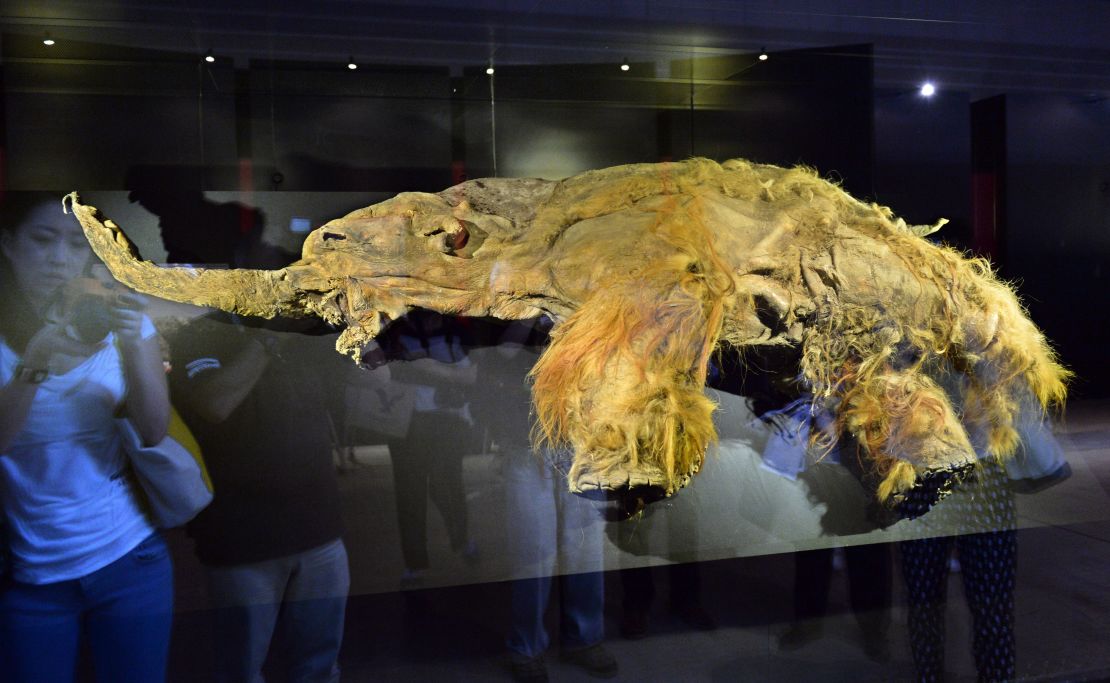This is a male woolly mammoth found in Arctic Siberia in 2002. The woolly mammoth (Mammuthus primigenius) is an extinct species of mammoth that lived during the Pleistocene until its extinction in the Holocene epoch. It was one of the last in a line of mammoth species, beginning with the African Mammuthus subplanifrons in the early Pliocene. The woolly mammoth began to diverge from the steppe mammoth about 800,000 years ago in East Asia. Its closest extant relative is the Asian elephant. The Columbian mammoth (Mammuthus columbi) lived alongside the woolly mammoth in North America, and DNA studies show that the two hybridised with each other.:focal(720x533:721x534)/https://tf-cmsv2-smithsonianmag-media.s3.amazonaws.com/filer/51/e9/51e9c7d8-440a-46c8-88be-eec9ee55f2a0/mammoth_painting_havens_web.jpg)
Can we bring the wooly mammoth back?
Even in retirement, 90-year-old Akira Iritani still dreamed of resurrecting the prehistoric woolly mammoth.
After decades of trying, the Japanese biologist admits he almost gave up. But when he heard about a well-preserved specimen embedded in the Siberian permafrost in 2012, he knew he had to investigate.
Turns out the 28,000-year-old baby mammoth, dubbed “Yuka”, was just what Iritani wanted. In a groundbreaking experiment, his research team successfully revived Yuka’s ancient cells, journal Scientific Reports revealed this month.

“I’d been trying to find dormant mammoth cells for 20 years but as I’m (now) 90, I thought I should just give up and accept death,” says Iritani, an animal reproduction expert and former director of the Institute of Advanced Technology at Kindai University in Wakayama, Japan.
“I’m so happy with this latest research. It feels like Yuka was waiting for me to find her.”

In the experiment, using a process known as nuclear transfer, Japanese and Russian scientists collected 88 nucleus-like structures from Yuka’s muscle tissue and transferred them into mouse ooctyes – cells that can divide to form an ovum, or female reproductive cell, in the ovaries.
Iritani then used a live-cell imaging technique to see if the long-dormant cells would react.
“I was looking under the microscope at night while I was alone in the laboratory,” he says. “I was so moved when I saw the cells stir. I’d been hoping for this for 20 years.”
Wooly mammoths, which were about the size of modern African elephants, died out about 4,000 years ago.

This breakthrough doesn’t mean that Iritan’s team will be cloning mammoths any time soon, however.
Yuka’s cells had been severely damaged over the millennia. Better samples and improvements to cloning technology are needed if the team is to successfully take mammoth DNA and insert it into elephant eggs that have had their DNA removed.
“Collecting elephant eggs is difficult as you need to think of the animal’s welfare,” says Kei Miyamoto, a member of the research team at Kindai University. “So far, we’ve confirmed some activity in the mouse embryo, but we’re not planning to replicate the experiment with an elephant embryo just yet.”
Iritani and his team are also aware of ethical questions over their work. However, he argues that understanding more about past extinctions will help scientists to better protect endangered species.
“It’s because of people that certain animals have gone extinct,” Iritani says. “It’s my duty to preserve species.”